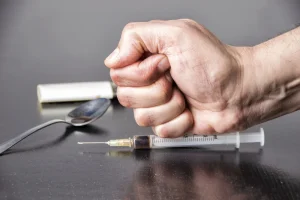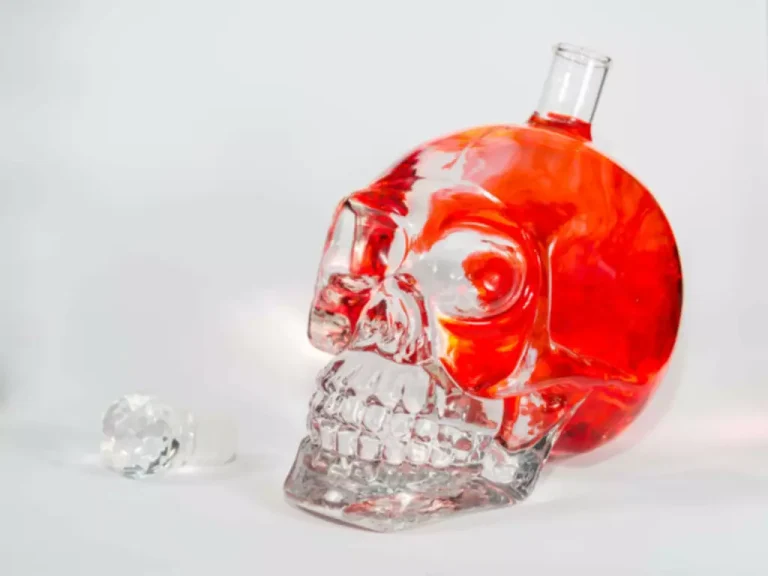Your cart is currently empty!
The Immune System through the Lens of Alcohol Intake and Gut Microbiota PMC

Production of interferons in monocytes is induced by activation of various TLRs and helicase receptors. The actions of interferons within the cells, in turn, are mediated by regulatory molecules called signal transducers and activators of transcription (STATs), a family does alcohol weaken your immune system of transcription factors that regulate the expression of certain immune genes. Thus, both acute and chronic alcohol inhibit induction of Type-I interferons via TLR3, TLR7/8, or TLR9 or by helicase receptors in monocytes (Pang et al. 2011; Pruett et al. 2004).
- The innate cellular response, which is mediated primarily by monocytes/macrophages and neutrophils, involves the recognition, phagocytosis, and destruction of pathogens—processes essential to subsequent adaptive responses.
- Acute alcohol can block differentiation or maturation of granulocytes (i.e., granulopoiesis) during infections (Zhang et al. 2009).
- In addition, alcohol markedly affects the differentiation of dendritic cells in blood and tissues (Ness et al. 2008).
- Pathways involving antigen presentation, B and T cell receptor signaling, and IL-15 signaling were altered with moderate vodka consumption (Joosten, van Erk et al. 2012).
How alcohol affects the innate immune system
- Soon after, the World Health Organization (WHO) also suggested that people cut back on drinking, since alcohol can increase the risk of experiencing complications from COVID-19.
- Similarly, most rodent studies to date have focused on acute/short-term binge models utilizing high concentration of ethanol (20% ethanol) as the sole source of fluid, a possible stressor in itself.
- People who don’t know they have celiac disease, an autoimmune condition in which the immune system attacks the intestinal lining after gluten ingestion, may have bloating and other symptoms when drinking beverages that contain gluten.
- By incompletely understood mechanisms, alcohol abuse leads to a disruption of the intestinal barrier integrity which in combination with the mucosal injury induced by alcohol, increases the permeability of the mucosa [55].
- Alcohol also impacts the function of immune cells of the central nervous system (CNS), particularly astrocytes and microglia.
Each T cell expresses a unique T-cell receptor (TCR) that confers specificity for one particular foreign molecule (i.e., antigen). Early studies already had indicated that chronic alcohol abuse (i.e., for 12 to 15 years) resulted in reduced numbers of peripheral T cells (Liu 1973; McFarland and Libre 1963). More recent studies confirmed this observation and showed that the lack of lymphocytes (i.e., lymphopenia) was as severe in people who engaged in a short period of binge drinking as it was in individuals who drank heavily for 6 months (Tonnesen et al. 1990). Interestingly, abstinence for 30 days was sufficient to restore lymphocyte numbers back to control levels (Tonnesen et al. 1990). Similar findings were obtained in animal models, where the number of T cells in the spleen decreased in mice fed a liquid diet (i.e., Lieber-DeCarli diet) containing 7 percent ethanol for as little as 7 days (Saad and Jerrells 1991) or 6 percent ethanol for 28 days (Percival and Sims 2000).
Modulation of Innate Immunity by Alcohol

Antibodies detect and get rid of substances that are harmful to your body, including bacteria and viruses. But prolonged alcohol abuse can lead to chronic (long-term) pancreatitis, which can be severe. Steatotic liver disease develops in about 90% of people who drink more than 1.5 to 2 ounces of alcohol per day.
Moderate alcohol use may not weaken the immune system, but you should be careful
Mixing alcoholic drinks with carbonated beverages (soda or seltzer) could also result in excess gas. 1NLRs can be classified into four subfamilies based on their specific structure at one end of the molecules. 3The HIV (or SIV) set point is the stable viral load that is established in an HIV-infected person after the initial phase of the infection, when the person’s immune systems tries to fight the virus.

For example, alcohol alters the numbers and relative abundances of microbes in the gut microbiome (see the article by Engen and colleagues), an extensive community of microorganisms in the intestine that aid in normal gut function. Alcohol consumption also damages epithelial cells, T cells, and neutrophils in the GI system, disrupting gut barrier function and facilitating leakage of microbes into the circulation (see the article by Hammer and colleagues). “By damaging those cells in your intestines, it can make it easier for pathogens to cross into your bloodstream,” says Nate Favini, MD, medical lead at Forward, a preventive primary care practice.

When you drink too much alcohol, it can throw off the balance of good and bad bacteria in your gut. That’s because your body already has processes in place that allow it to store excess proteins, carbohydrates and fats. So, your system prioritizes getting rid of alcohol before it can turn its attention to its other work. Your liver detoxifies and removes alcohol from your blood through a process known as oxidation. When your liver finishes that process, alcohol gets turned into water and carbon dioxide.
The effect of moderate alcohol consumption on fat distribution and adipocytokines
As a result, bacteria may leak from the GI tract into your bloodstream, which can itself make you sick. Also, bacteria that escape this area can change the immune system in your liver, which can lead to inflammation and, potentially, alcoholic liver disease. Acetaldehyde is the toxic byproduct that contributes to tissue damage, alcohol dependence, and addiction (Zakhari 2006). It can also bind to other proteins to form adducts, such as malondialdehyde (MDA) and MDA-acetaldehyde (MAA), which play a key role in the development of liver injury and stimulate antibody responses that further promote liver inflammation and fibrosis (Tuma and Casey 2003). In addition, oxidation of ethanol by CYP2E1 leads to the formation of reactive oxygen species (ROS).

Alcohol And Muscle Relaxers: 4 Things To Know About This Risky Combination
Human T cells incubated in vitro with variable concentrations of ethanol (0, 10, 25, and 50mM for 24 hours) showed a reduced expression of the VDR, accompanied by increased expression of RAS and ROS as well as increased T-cell death (Rehman et al. 2013). Additional analyses demonstrated that ethanol exposure promoted apoptosis by inducing breaks in the DNA of the T cells. This damage to the DNA most likely was mediated by ROS generation in response to RAS activation. Treatment with a compound that activates the VDR (i.e., a VDR agonist) restored the T cell’s VDR expression, down-regulated RAS expression as well as ROS generation, and thus preserved T-cell survival (Rehman et al. 2013). These observations could explain why animals drinking moderately generated a more robust response to MVA vaccination compared to controls and animals that drank to intoxication since these factors are critical for lymphocyte proliferation, T cell activation and effector function, and immune cell recruitment. In contrast, level of anti-inflammatory protein adiponectin increased (Joosten, van Erk et al. 2012).

Similarly, vitamin C, also an antioxidant, is important for phagocytic activity of neutrophils and monocytes, and enhances T cell responses (Strohle and Hahn 2009). Thiamine, also known as vitamin B1, contributes to the activation of T cells, suppresses oxidative stress-induced NFκB activation in macrophages, and serves as an anti-inflammatory factor (Manzetti, Zhang et al. 2014). Antigen-specific responses are decreased in folate-deficient humans and animals (Dhur, Galan et al. 1991). The effects of alcohol on both cell-mediated https://ecosoberhouse.com/ and humoral immunity have been well-documented since the early 1960s, wherein researchers found that alcohol abuse significantly reduced both CD4 and CD8 T-cell counts. Various types of Igs (e.g., IgA, IgG, IgM) are produced at different times during an infection or in response to a range of antigens that have specific roles in the adaptive immune response. However, it is important to realize that many aspects of alcohol consumption and its effects on immunity and host defense have not yet been fully elucidated.
- “Alcohol has diverse adverse effects throughout the body, including on all cells of the immune system, that lead to increased risk of serious infections,” said Dr. E. Jennifer Edelman, a Yale Medicine addiction medicine specialist.
- This alcohol-induced defect in Th1 immunity correlates with suppression of IL-12 secretion by macrophages and dendritic cells (Waltenbaugh et al. 1998).
- The molecular mechanisms underlying ethanol’s impact on the adaptive immune system remain poorly understood.
- The adaptive immune response can be distinguished from innate immunity by the capability of generating immunological memory, or protective immunity against recurring disease caused by the same pathogen (Janeway 2008).
- These molecules help recruit and activate additional PMNs as well as macrophages to the site of an injury or infection.
- The effects of chronic alcohol exposure are not limited to phenotypic changes in T cells but also include T-cell functions.
- Much progress has been made in elucidating the relationship between alcohol consumption and immune function and how this interaction affects human health.
- Leclercq et al. [67] found a correlation between leaky gut and inflammation with modifications in scores of depression, anxiety and social interactions in alcohol craving.
- Meadows and Zhang discuss specific mechanisms through which alcohol interferes with the body’s immune defense against cancer.
- Only if a pathogen can evade the different components of this response (i.e., structural barriers as well as cell-mediated and humoral responses) does the infection become established and an adaptive immune response ensues.
- The complexity of the innate and adaptive immune responses are increased further by the fact that different subsets of immune cells may reside in specific organs, such as the liver, lungs, brain, skin, bones, or muscles.
Similarly, the incidence of Mycobacterium tuberculosis infection among alcoholics is increased (Sabot and Vendrame 1969, Hudolin 1975, Kline, Hedemark et al. 1995, Panic and Panic 2001). Alcohol use has also been shown to drive disease progression in chronic viral infections such as human immunodeficiency virus (HIV) (Baum, Rafie et al. 2010) and Hepatitis C (Bhattacharya and Shuhart 2003). In addition, the magnitude of antibody response following vaccination with Hepatitis B is lower in alcoholics compared to controls (Nalpas, Thepot et al. 1993). T cells constitute a diverse population of lymphocytes that develop in the bone marrow and mature in the thymus.